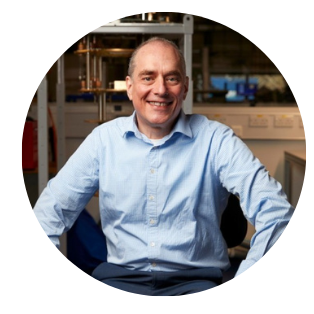Applications
 Part of the Oxford Instruments Group
Part of the Oxford Instruments Group
Expand
Collapse
Last week, Oxford Instruments NanoScience and The Quantum Daily released a documentary, Quantum Technology | Our Sustainable Future. The film explores the debate around sustainability in quantum technology including how it is driving innovation in key areas such as chemistry and physics. To coincide with this special release, we’ll be sharing a series of posts that delve into key themes on the topic of sustainability, starting with the concept of using nature to calculate nature.
Nobel Prize-winning physicist, Richard Feynman, famously explained that we can’t simulate naturally occurring molecules with computers as they are the wrong type of logic. Instead, we should apply physics to the real world and use a different set of objects that we have control over, following the laws of quantum mechanics.
In this first blog post, Oxford Instruments Managing Director, Stuart Woods, looks at the classical computer vs. the quantum computer and how we can ensure sustainability by investing in practices which will ultimately help support the planet.
The best way to understand the benefits of quantum computing is by looking at the capabilities of what we call a classical computer. These computers are essentially machines that perform a series of mathematical operations at speed to provide us with capabilities such as playing games, watching videos, or communicating with others across the world. These well-loved devices answer our questions using the laws of classical mechanics and classical information theory.
Questions that are organic in nature can’t be solved using the laws of classical mechanics or classical information theory. To answer questions in nature, calculations need to be done differently, right down to the way the question is asked. Even if computers were the size of a planet, certain problems couldn’t be solved using a traditional computer. For example, solving protein structures and protein folding - the process by which a protein becomes biologically functional - is only possible using the laws of quantum mechanics.
Quantum computers use nature to simulate molecules and atoms, executing multiple computational paths in parallel to deliver outstanding capacity. There is still a way to go when it comes to tackling errors and scalability. While a traditional computer solves errors by keeping copies of each bit, it’s a fundamental principle of quantum mechanics that you can’t make a copy of an arbitrary quantum scale. In terms of scalability, a suitable algorithm is required to solve computational difficulties. Development is being carried out in both of these areas to answer the questions that can’t be predicted by a classical computer.
Right now, there is $25bn government funding invested in building a quantum computing ecosystem. Alongside developments, quantum computers are already being used to answer some of our biggest questions in discovering nature. Whether it’s a question relating to CO2 or coal production, these different variables are complex. Having a computer assist our understanding of these natural processes and look at multiple things in parallel is exactly what needs to happen for us to limit the destruction to our planet.
We currently have supercomputers, artificial intelligence and other techniques that allow us to speed up discovery. We can do science faster, but what we’re able to do today is fundamentally flawed. Even the most talented laboratory chemists in the world may only be able to perform five experiments a week. With a state-of-the-art laboratory, they may be able to increase this performance to 100,000 experiments a week, but supercomputers can’t simulate physics or chemistry. It’s essentially trial and error. We need to bring all the tools to bear that we can if we truly want to help the planet.
By building a quantum computer model that allows us to replicate experiments in code and do experiments in conjunction with a lab, laboratories will be able to perform more experiments on an ongoing basis. This will allow scientists to test their hypotheses faster as well as their ideas much faster. The hope is also that these experiments will be more accurate, enabling greater breakthroughs in solving nature’s greatest challenges. For example, understanding how to reverse, reduce, or eliminate waste starts with getting to grips with the nature of the chemistry behind these challenges.
According to Pete Shadbolt at PsiQuantum, when people try to work with chemistry today they are effectively using stone age tools. However, through the early use of quantum computers, scientists have been able to carry out some of the most difficult chemical modelling ever undertaken. It’s early days but it’s a start.
In 2019, Google conducted the quantum supremacy experiment which compared a quantum computer with the world’s largest supercomputer. Alan Ho at Google Quantum AI described the calculation of the quantum computer as a billion times faster and a trillion times more energy efficient. Developments such as this demonstrate how beneficial quantum will be in computation and energy efficiency. According to Ilana Wisby at Oxford Quantum Circuits, the future of quantum relies on bigger systems, creating a need for us to be able to scale them, have high-quality qubits and be able to build the infrastructure to control them. While there are more technical questions to be answered, quantum computing is a powerful tool with significant promise, giving us hope for a different and more sustainable future.
Stuart Woods, Managing Director, Oxford Instruments NanoScience
Stay tuned on our LinkedIn page to be the first to hear about our next blog in our Sustainability Series.

Stuart Woods